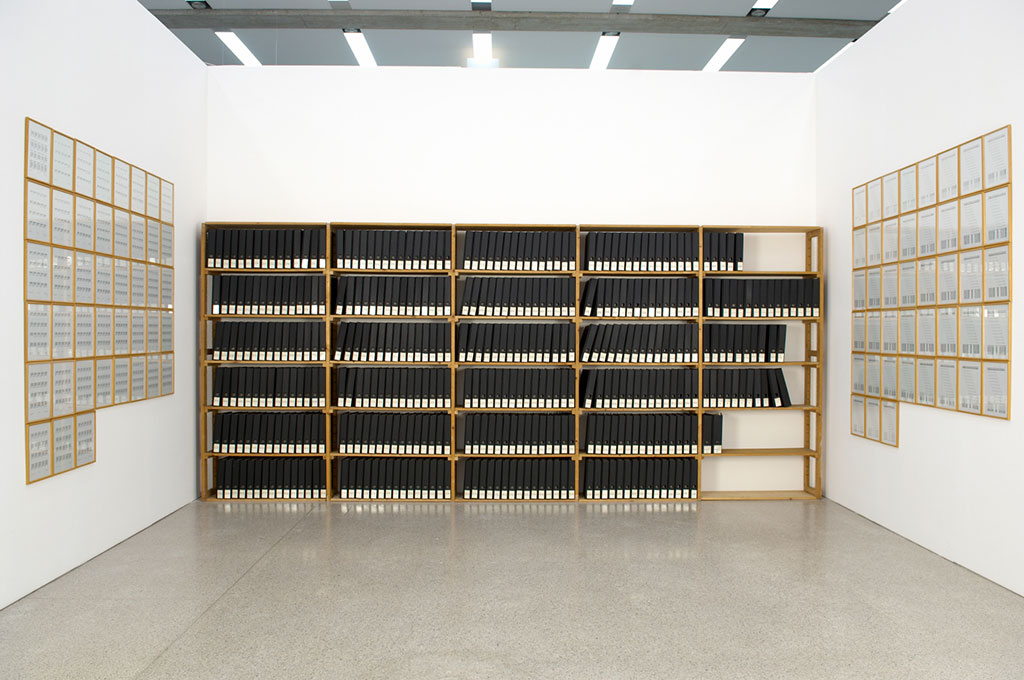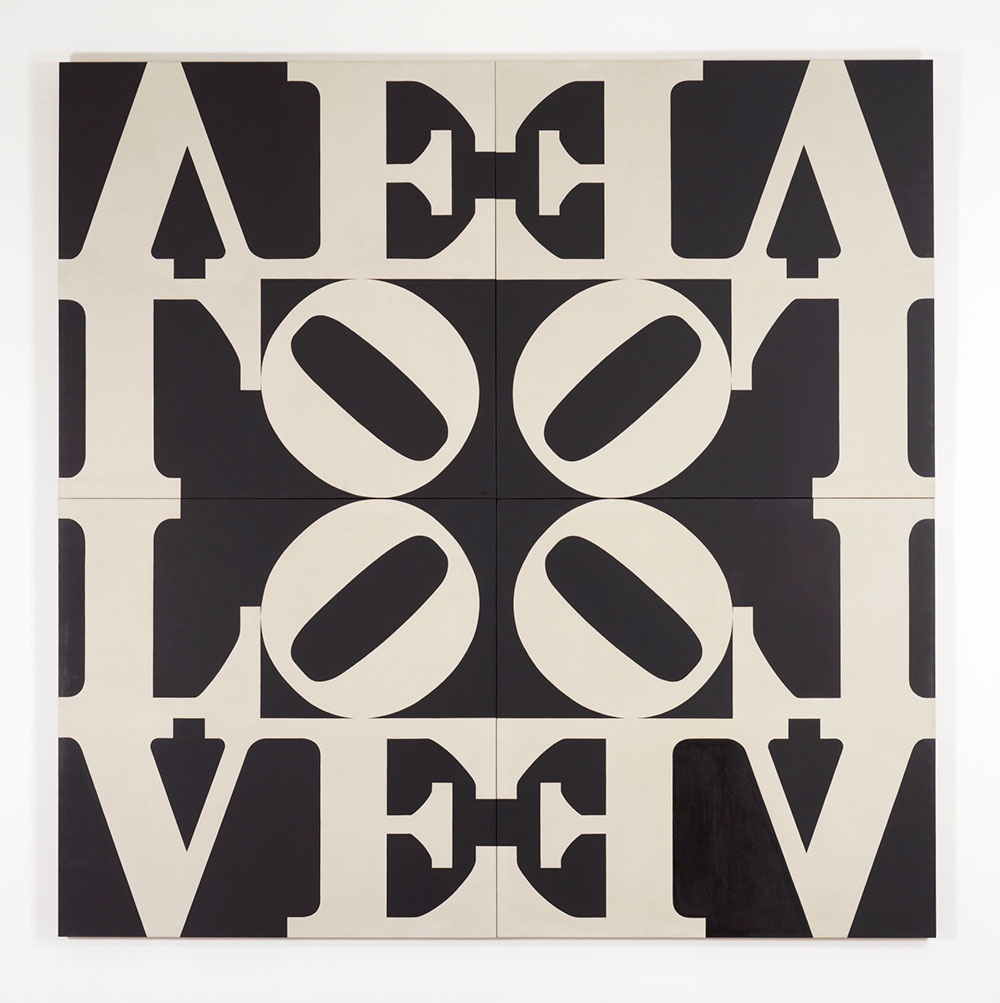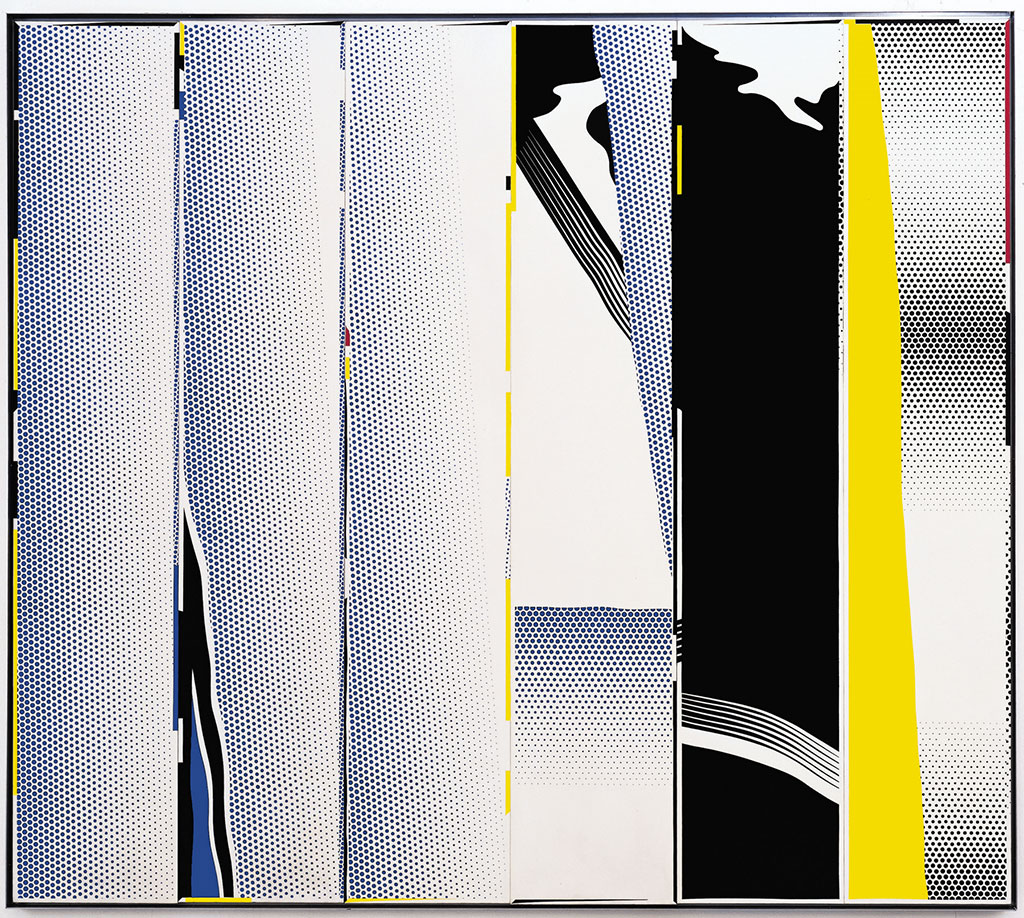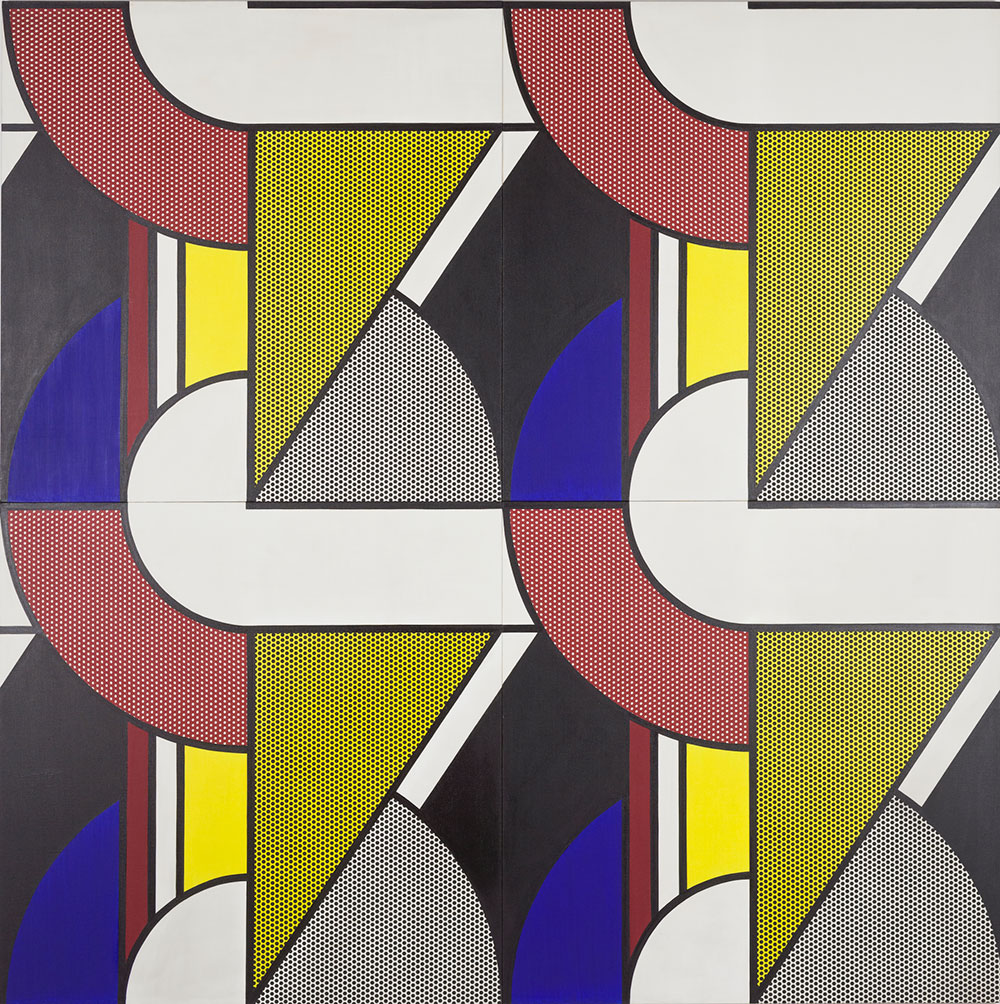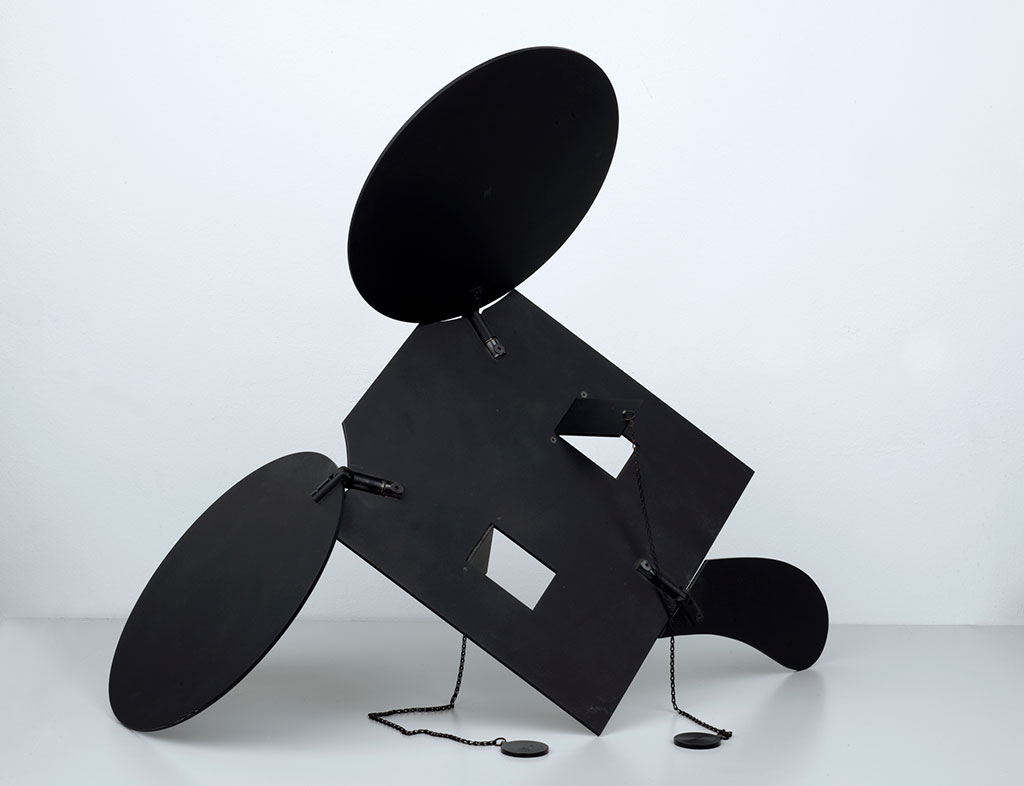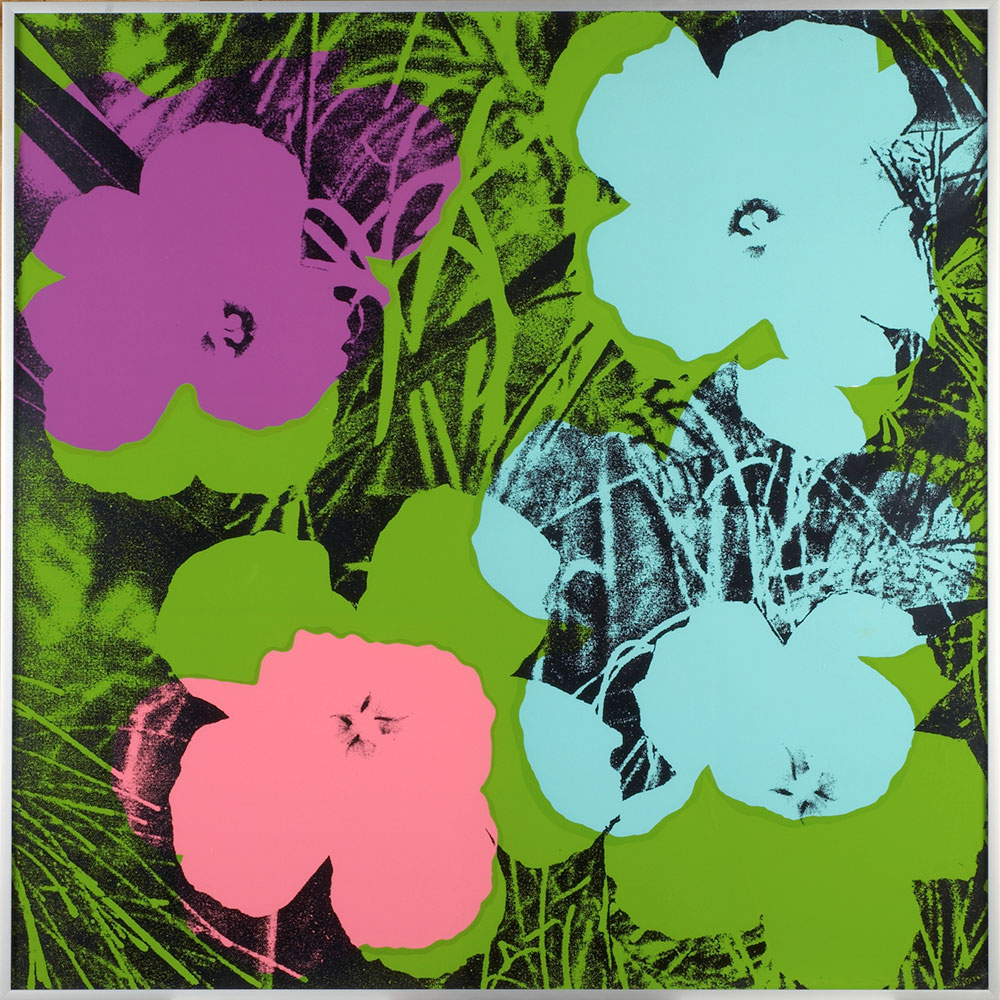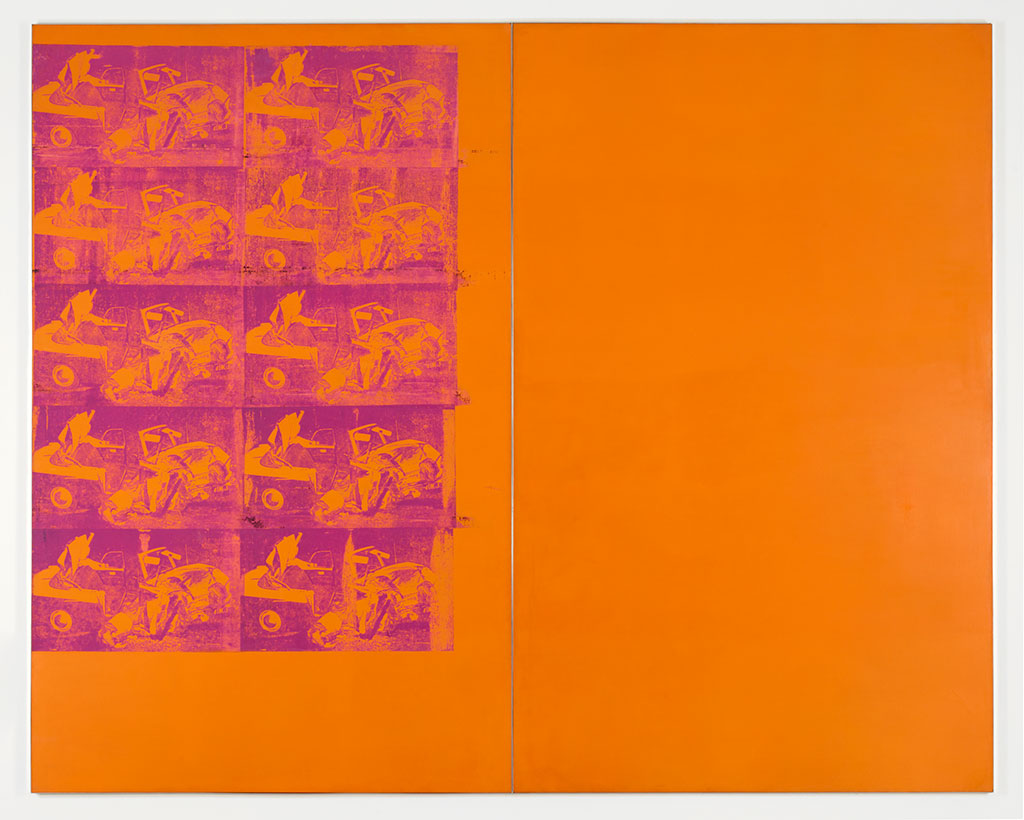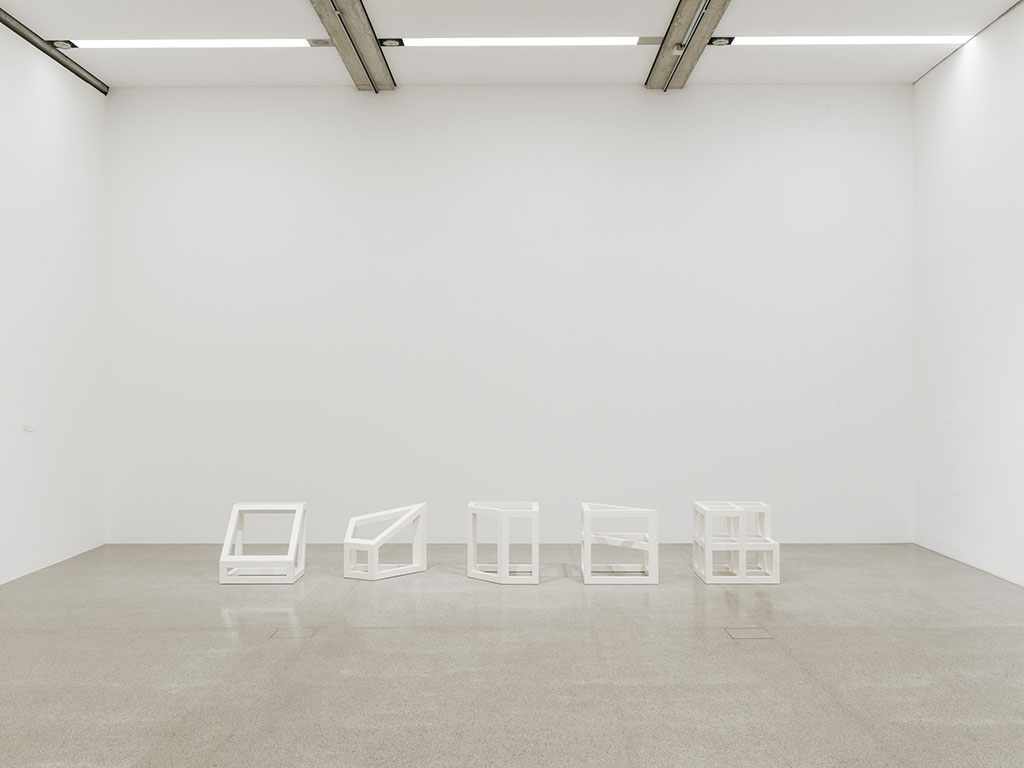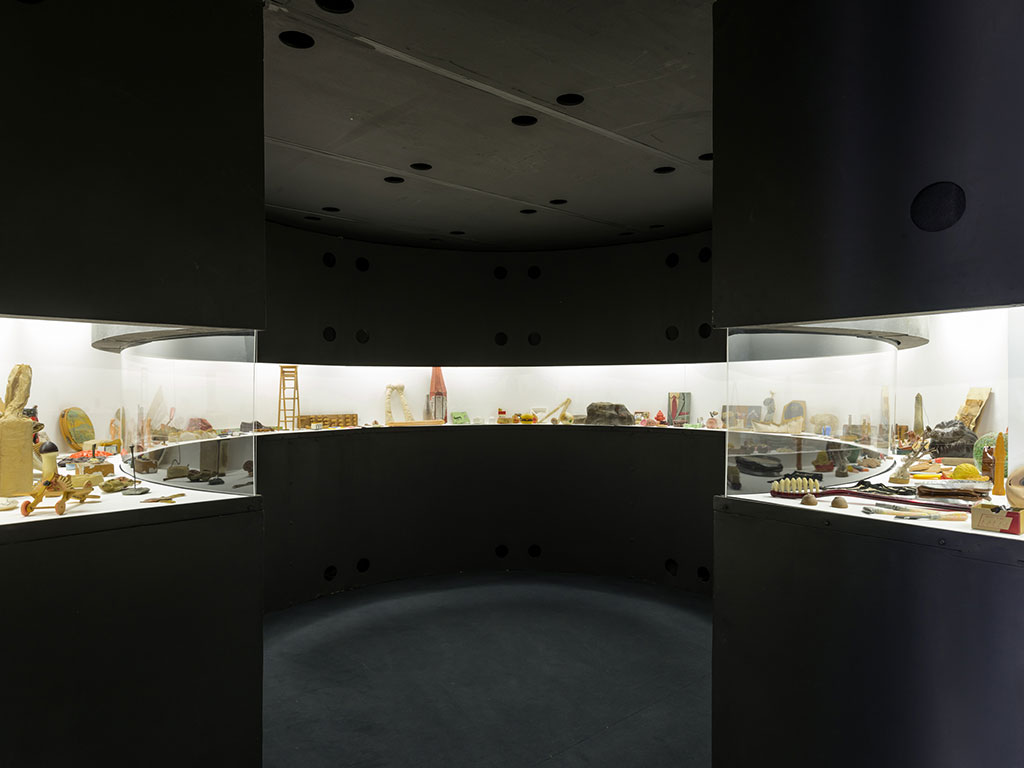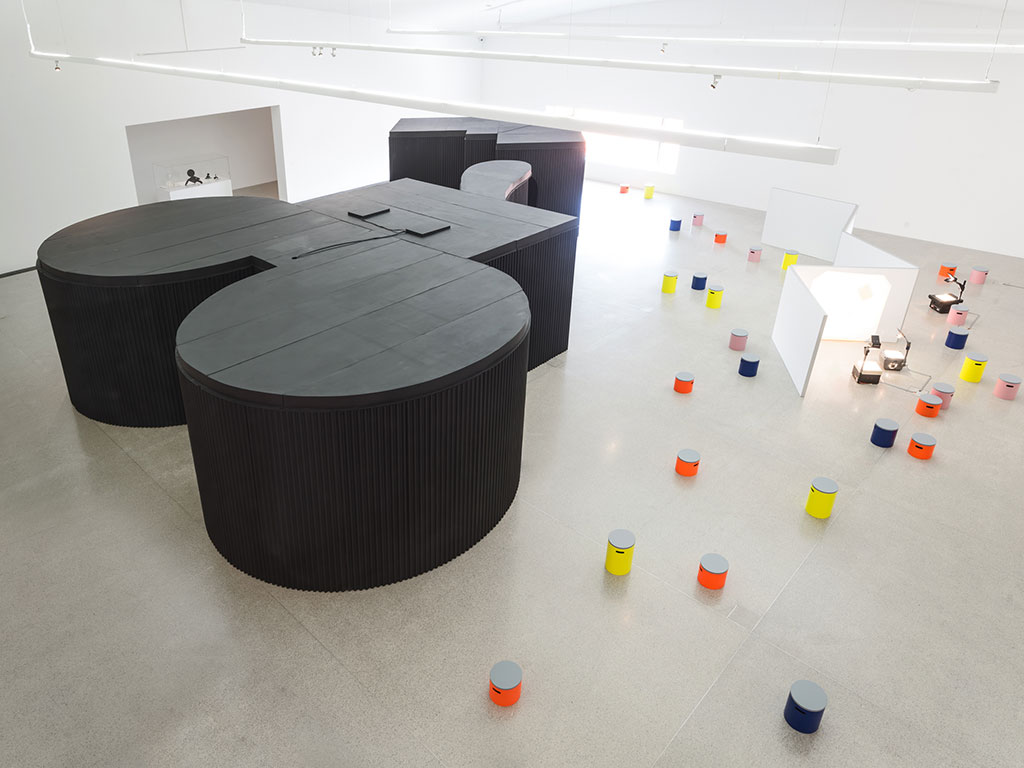ART-PRESENTATION: Misfitting Together
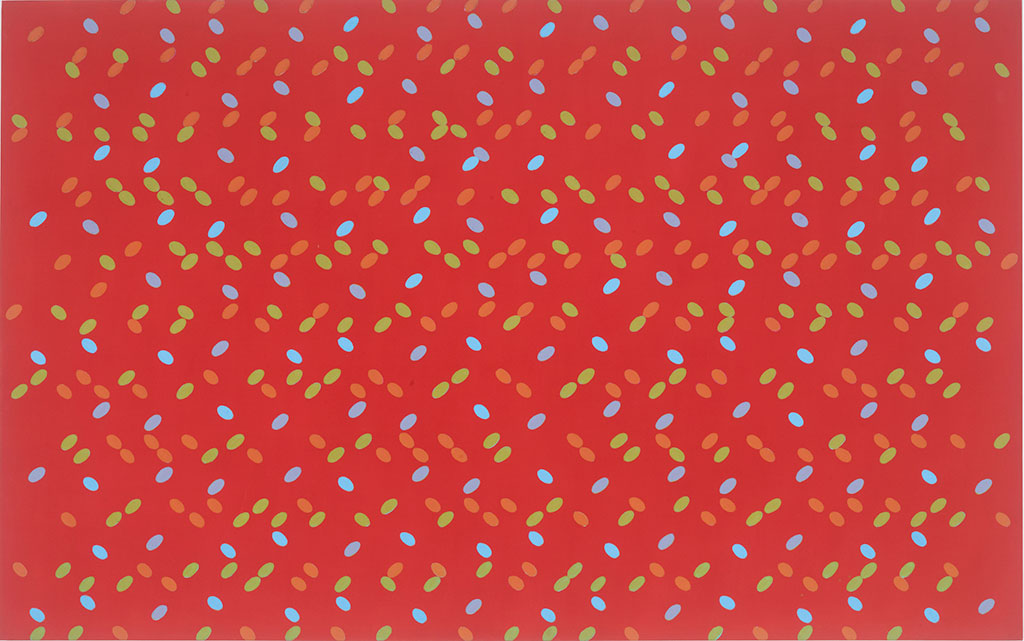 Andy Warhol’s last exhibition at mumok was in 1981, when he was still alive. Some forty years later, it seems long overdue to present his oeuvre in a comprehensive art-historical context. The collection exhibition “Misfitting Together-Serial Formations of Pop, Minimal, and Conceptual Art” faces the challenge not only of situating Warhol in the field of Pop Art but also of painting a more nuanced picture of the times by including works of Minimal and Conceptual, juxtaposing these movements will show how strongly they have influenced each other and how hard it is to pigeonhole them art-historically. Warhol’s work can thus be experienced in a contemporary historical context.
Andy Warhol’s last exhibition at mumok was in 1981, when he was still alive. Some forty years later, it seems long overdue to present his oeuvre in a comprehensive art-historical context. The collection exhibition “Misfitting Together-Serial Formations of Pop, Minimal, and Conceptual Art” faces the challenge not only of situating Warhol in the field of Pop Art but also of painting a more nuanced picture of the times by including works of Minimal and Conceptual, juxtaposing these movements will show how strongly they have influenced each other and how hard it is to pigeonhole them art-historically. Warhol’s work can thus be experienced in a contemporary historical context.
By Dimitris Lempesis
Photo: mumok Archive
Referencing Mel Bochner’s article “The Serial Attitude,” published in Artforum in 1967, “Misfitting Together” explores the serial order as a link of all three art movements: Pop Art, Minimal Art, and Conceptual Art. As Bochner stated in his article, serial arrangement is a method, not a style. Seriality should be understood not as formalized playfulness but as artistic strategy with clearly defined underlying processes, often from the fields of mathematics and language. Individual decisions are overcome by way of objective processes. Here, Bochner distinguishes between modular and serial ideas: Modular works are based on the repetition of one standardized unit that doesn’t change its basic form and therefore depict a temporal moment (e.g., Robert Indiana, Love Rising / Black and White Love (For Martin Luther King), 1968), while serial works follow a logical sequence and therefore depict a temporal progression (e.g., Sol LeWitt, Form Derived from a Cube, 1986). Both approaches can be found in all three movements and are confronted with each other in the exhibition. That the notion of the seriality became the subject of a heated debate as far back as the 1960s is also illustrated by the fact that, in 1967, not one but two exhibitions about the topic were presented in university institutions, one in Europe and one in the United States. “Serial Formations” as referenced in the exhibition’s subtitle-was a show organized by dealer Paul Maenz and artist Peter Roehr in the studio gallery of Goethe University Frankfurt. It was the first thematic exhibition of international minimalist tendencies in Germany. It focused on the multifaceted manifestations of serial work, even if they seemed radically different conceptually. Attempts at style-oriented categorization and the boundaries of genres were thus called into question. Half a year later, Mel Bochner and Elayne Varian organized the exhibition Art in Series at Finch College in New York. It, too, presented many different works focusing on serial methods that today are attributed to different art movements. It is interesting to observe that a similar interest seemed to be bubbling up in both Central Europe and the United States. The selection of works in MISFITTING TOGETHER should exemplify this, as it presents protagonists of the Central and Eastern European scenes along with several well-known American positions. It is hardly a secret that the concept of seriality also played a crucial role in Warhol’s work. Nonetheless, the exhibition aims to introduce a process-based serial concept that ought not to be understood in the sense of dully repeating the same subject over and over again but rather as a fascination with diversity and difference within a series. Instead of one definitive final result, it was the steadily changing process that was at the heart of Warhol’s serial concept. A similar method can be seen with contemporaries like Hanne Darboven, On Kawara, or Charlotte Posenenske. A present-day addition is “FIREARMS”, a work by the recently deceased Lutz Bacher that became part of the mumok Collection through an acquisition by the Ludwig Foundation in 2019. In her serial work, Bacher draws a portrait of firearms as commodities of international trade as well as historical, much-sought-after collector’s objects. “Mouse Museum” (1965-77) and “Ray Gun Wing” (1961/77) by Claes Oldenburg are among the major works of Pop Art and, because they are walk-in installations, can be regarded as miniature museums. A similar interest in the intersection between work and exhibition will crystallize in the other two Warhol exhibitions that will open in autumn and will be dedicated to other aspects of the phenomenon that is Andy.
Participating Artists: Lutz Bacher, Alighiero Boetti, Daniel Buren, Hanne Darboven, Jan Dibbets, Heinz Gappmayr, Robert Indiana, Jasper Johns, Donald Judd, On Kawara, Joseph Kosuth, Sol LeWitt, Roy Lichtenstein, Dóra Maurer, Claes Oldenburg, Friederike Pezold, Larry Poons, Charlotte Posenenske, Peter Roehr, Robert Smithson, Daniel Spoerri and Andy Warhol
Info: Curators: Marianne Dobner and Naoko Kaltschmidt, mumok – Museum moderner Kunst Stiftung Ludwig, Museumsplatz 1, Vienna, Duration: 1/7/20-6/1/21, Days & Hours: Wed-Sun 10:00-18:00, www.mumok.at
